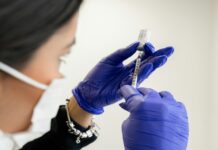According to Statifacts, the global bio-implants market size is forecasted to surge from $148 billion in 2025 to almost $271 billion by 2034, thereby expanding at CAGR of 7% between 2024 to 2034.
The bio-implants market growth happens to be driven due to high adoption when it comes to dental and prosthetic implants, the rising prevalence of chronic diseases and conditions as well as advancement when it comes to biotechnology and biomaterials.
A Sector Snapshot
Bio implants happen to be man-made medical devices that are fabricated as well as used like body implants so as to both support and replace the damaged internal organs, bones, or any other tissue and support biological structures like bones. These happened to be materials of human or animal origin, which are offered post-conservation or preparation for tissue replacement.
Biological implants happen to come in a variety of types, such as dental implants, orthopedic implants, spinal implants, breast implants, and cardiovascular implants. It is well to be noted that there is a prominent growth in the bio-implants market because of a number of elements, such as a shortage of donor organs for medical treatment, growing demand for both healthcare applications and cosmetic procedures, and various advancements in medical implant materials.
Bio implants such as cochlear implants as well as dental implants are also gaining a lot of popularity so as to treat an array of medical needs, from treatment of health conditions to various physiotherapy applications like restoration of mobility. The factors that advancements in biomedical engineering are also boosting progress in this market.
The widening global healthcare sector, along with the growing bioartificial manufacturing technology ventures, happens to be leading to significant demand generation in the market. Teamed with this are the growing number of clinics as well as diagnostic centers, rising medical tourism specifically to emerging countries in the Asia Pacific, and also growing awareness when it comes to advanced medical treatment, which happen to be some of the secondary elements leading to a rising CAGR in the sector.
Notably, the advancements in dental technologies are also leading to the development of more affordable as well as comfortable dentures along with tooth implants. The use of artificial intelligence-based enhancement to photogrammetry is also enhancing implant quality as well as its durability. These technologies have also been developed into on-premise manufacturing solutions, which have gone on to revolutionize the dental industry.
Key Highlights of the Bio-Implants Market
- Asia Pacific is anticipated to expand at the fastest CAGR in the forecast period.
- North America dominated the global bio-implants market last year in 2024.
- By product, the dental implants segment is anticipated to surge at the fastest CAGR over the projected period.
- By product, the cardiovascular implant segment happens to hold the major revenue share in 2024.
- By material, the polymer segment is projected to grow at a massive CAGR over the projected period.
- By material, the ceramic segment comprised a prominent share of the bio-implants market in 2024.
- By origin, the allograft segment is projected to rise at the fastest CAGR in the projected period.
- By origin, the autographed segment happens to have the largest revenue share in 2024.
- By end user, the clinic segment is projected to grow with the highest CAGR in the market in the forecast period.
- By end user, the hospital segment registered its prominence over the largest market share in 2024.
Major Key Trends When It Comes to the Bio-Implants Market
Rising demand for cosmetic surgery
A worldwide rise in breast cancer incidence as well as shifting global beauty trends are indeed pushing demand for pectoral, cough, as well as buttock implants. Advancements when it comes to biomaterials have surged the material safety by leading to increased biocompatibility as well as biodegradability.
New Tech in Dental Implants
Modi research researchers are now using nanotechnology so as to enhance osseointegration, which is the process through which dental implants merge with the jawbone. Metals such as cobalt-chromium, titanium, and stainless steel are often used in bio-implants because of their durability, strength, biocompatibility, and tribological properties.
Healthcare infrastructure growth
Numerous infrastructure systems and personal arrangements, as well as processes, happen to be important when it comes to the future global medical aims and objectives, thereby underpinning a novel approach to healthcare that will make sure of sustainability, cost reduction, and efficiency, as well as a decreased carbon footprint and, most significantly, enhanced patient care.
Limitations and issues in the bio-implants market
Dearth of biocompatibility
Due to the lack of biocompatibility, the machine implant material does not resist any biocorrosion, which thereby leads to a dearth in the growth of the human cells. Bacterial addition when it comes to biomaterials that can cause biomaterial-centered infection, as well as sport tissue integration, is indeed a challenge that stalls the medical device’s lifetime.
High implant cost
The high cost of bio implants is a primary barrier to their widespread adoption, which is indeed unaffordable to many patients.
Stringent regulatory need for bio-implant approval
The major regulatory requirement for implants goes on to include investigational device exemption for clinical studies along with medical device listing as well as establishment registration.
Development when it comes to bio implants because of the advent of AI-markets biggest potential
It’s worth noting that artificial intelligence has multiple applications when it comes to the bio-implants market, which include applications such as peri-implant bone loss detection, dental implant recognition, and implant failure determination, thereby demonstrating the capacity for AI to contribute when it comes to improving diagnostics as well as treatment monitoring capacities in terms of implant dentistry by way of evaluation of bone dimensions and pinpointing the positions for potential dental implant placements on the cone beam, which is computed by way of tomography images.
AI-based tech is being utilized to increase the biocompatibility of bio-implants by way of using novel materials to offer them excellent corrosion and biological degradation resistances. Besides this, they are also needed to possess exact mechanical strength so as to sustain cyclic loading at the fracture site.
AI at present is also being made use of in implant dentistry so as to recognize the implant brand as well as type when it comes to examining radiographic images, forecast implant success, enhance implant design, and also improve the treatment planning by way of using three-dimensional cone beam computer tomography imaging osseointegration. Apparently, AI can go into large patient data sets in order to help when it comes to diagnosis and treatment planning, therefore enhancing the planning process.
Analysis based on the Region
North America’s dominant position – technological advancement to support growth
It is well to be noted that North America dominated the global bio-implant market in 2024, which was driven due to factors such as the rising prevalence of chronic conditions like obesity, diabetes, cancer, heart disease, and hypertension.
The United States, apparently, happens to be the key contributor when it comes to the global market, driven by innovative medical technologies, as well as high healthcare expenditure and also a rising geriatric population.
Major reasons for the market expansion within North America
The bio-implants are mostly used for enhanced osseointegration, antibacterial and anti-inflammatory properties, tissue regeneration, or drug delivery, thereby driving the growth of the bio-implants market across North America.
What to anticipate from Asian countries for the bioplants market by the end of the decade?
Notably, Asia Pacific is predicted to grow at the fastest rate in the market in the forecast period. The bio-implants market within the Asia-Pacific region happens to be driven due to rising demand when it comes to advanced medical solutions along with the rising incidences of chronic diseases. Bio implants happen to be highly used when it comes to orthopedic surgery in order to repair or even replace damaged bones and joints as well as soft tissues.
Bio-Implant Production – Top Asian Countries
China—In September 2024, Regenity Biosciences, which happens to be a global leader in regenerative medicine along with Linden Capital Partners portfolio, announced that they had received regulatory approval from the NMPA in China for its novel cross-linked bioresorbable and implantable collagen dental membrane, which is intended for use in oral surgical procedures.
Apparently, Regenity is going to commercialize the plant in China by way of partnerships through its private brand B2B business model.
India—In January 2025, the Insignia Hip Stem in India was launched and announced by Stryker, which happens to be a global leader in medical technologies. Interestingly, Insignia is designed so as to enhance patient fit as well as enable surgeons to ease the implantation for overall hip and hemiarthroplasty procedures.
















